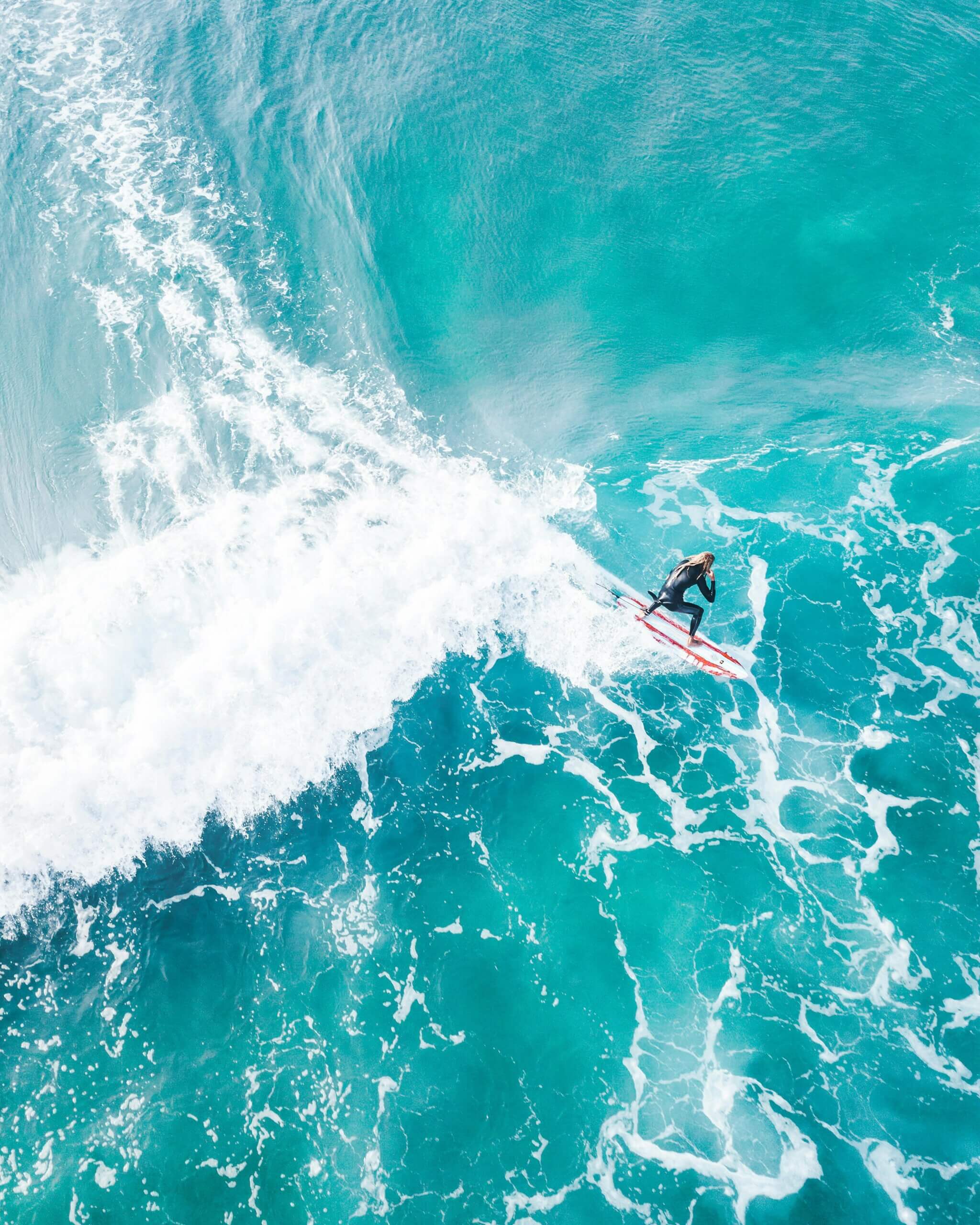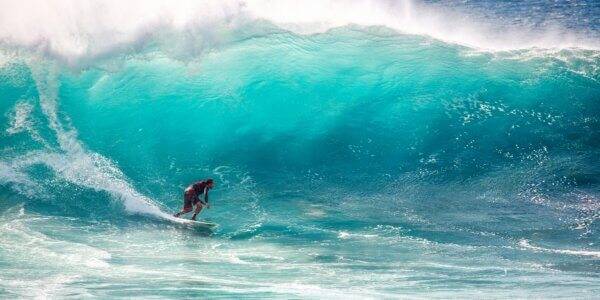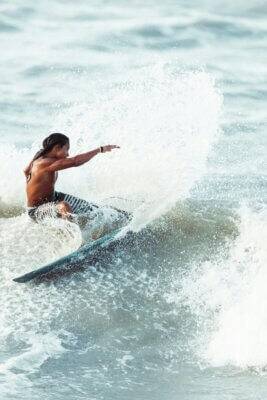
17 Feb How Your Genetics Might Make You a Natural Surfer: Meet The Warrior Gene (Part 1)
Some people are drawn to the ocean like a moth to a flame, or more appropriately, like a surfer to an overhead barrel. Ever wonder why some folks live for the rush of dropping into a wave, while others prefer keeping their feet on dry land? Well, science might have an answer, and it’s hiding deep within our DNA. Meet the Warrior’s Gene, also known as MAOA (Monoamine Oxidase A), the little strand of genetic code that may explain why some people are hardwired for adrenaline-fueled sports like surfing.
The Warrior’s Gene: Surf’s Up, Fear’s Down
The MAOA gene is linked to dopamine regulation, risk-taking behavior, and impulse control. Those with certain variations of this gene, often dubbed the “Warrior’s Gene”, are known to have a higher tolerance for stress and a natural attraction to high-adrenaline activities. In other words, if you’re the type who sees a monstrous swell and thinks, Oh yeah, let’s go!, you might just have genetics to thank for it.
Studies suggest that people with this gene variant have a higher threshold for fear and an enhanced ability to handle high-pressure situations. Essentially, their bodies respond differently to stress, often turning anxiety into excitement rather than panic. That’s a pretty handy trait when you’re paddling into an 8-foot wave, knowing full well that wiping out could mean getting rag-dolled underwater for what feels like an eternity.
Adrenaline Junkie? Blame Your DNA
Surfing isn’t just about balance and paddling strength, it’s about chasing the rush. Scientists have found that thrill-seekers, including big-wave surfers, skydivers, and extreme athletes, tend to have genetic variations that make them more sensitive to dopamine, the brain’s “feel-good” neurotransmitter. In other words, that euphoric feeling of carving through a perfect wave? People with the Warrior’s Gene feel it more intensely than others, which is why they keep coming back for more.
It’s not just about fearlessness, it’s also about reward-seeking behavior. Surfing, with its unpredictability, constant challenge, and ever-changing conditions, offers a dopamine jackpot for those with a genetic predisposition to thrill-seeking. Every successful ride reinforces the cycle, making surfers crave bigger waves, faster barrels, and heavier drops.
The Science of Wipeouts: Genetic Resilience in Surfing
Let’s face it, if you surf, you fall. A lot. And yet, some surfers seem to bounce back from injuries like they’ve got Wolverine’s healing powers. While there’s no “surfing gene” (yet!), there are genetic factors that contribute to how quickly an athlete recovers from injuries, and these could play a role in why some surfers can take a beating and still paddle back out.
Certain gene variations influence muscle regeneration, inflammation control, and pain tolerance. For example:
- ACTN3: Also known as the “sprinter’s gene,” this gene is linked to fast-twitch muscle fibers and explosive power, useful for quick pop-ups and sharp turns. It’s also associated with faster muscle recovery.
- COL5A1: This gene affects collagen production, influencing ligament and tendon strength. Surfers with strong ligaments are less prone to sprains and injuries from those awkward wipeouts.
- IL6 and TNF Genes: These genes regulate inflammation levels, which can determine how quickly a surfer recovers from sore muscles or even serious injuries. Some people’s bodies naturally produce less inflammation post-exercise, allowing them to bounce back quicker after grueling surf sessions.
Nature vs. Nurture: Are Surfers Born or Made?
While genetics might nudge some people toward a life of chasing waves, nurture plays just as big a role. Growing up near the ocean, having access to waves, and simply spending time in the water all influence whether someone becomes a surfer. However, if you were the kind of kid who climbed trees, rode your bike down the steepest hill you could find, and constantly tested your own limits, chances are, you’ve got some adrenaline-seeking genetics in your blood.
And let’s not forget mental resilience, another trait linked to genetic makeup. Surfing isn’t just physically demanding; it requires patience, adaptability, and an ability to embrace failure (because let’s be honest, getting worked by a wave is part of the process). Some studies suggest that genetic variations influence dopamine receptor efficiency, meaning some people are naturally better at handling setbacks and staying motivated.
The Final Wave: Genetics and Surfing’s Perfect Match
So, does having the Warrior’s Gene make you a great surfer? Not necessarily, but it sure helps if you love the thrill, can handle a pounding, and recover quickly. Your DNA might be giving you an edge, but at the end of the day, surfing is about passion, persistence, and the willingness to get back on your board no matter how many times you wipe out.
Whether you’re a genetically predisposed adrenaline junkie or just someone who fell in love with the ocean, one thing’s for sure, if you keep chasing waves, your body and brain will reward you. And hey, if you’re curious about whether your DNA makes you a natural-born surfer, maybe it’s time to paddle out, drop in, and let science take care of the rest.
Want to test your limits in Bali’s perfect waves? Book your next surf adventure at Wave House Bali and let’s see if you’ve got the Warrior’s Gene in you!




